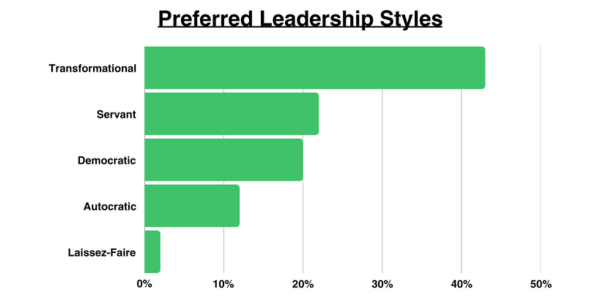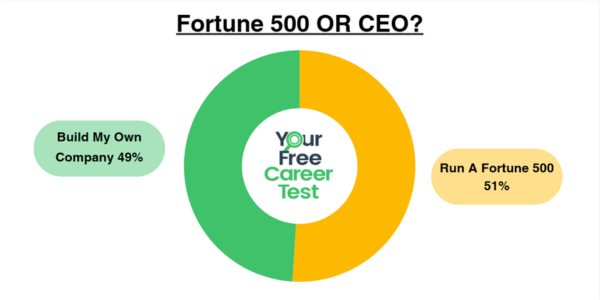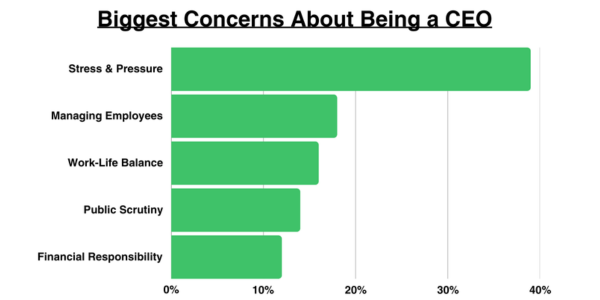Disclaimer: The information on our website is provided for general information purposes only. We make no representations or warranties of any kind, express or implied, about the completeness, accuracy, reliability, suitability or availability with respect to the website or the information contained on our website for any purpose. Any reliance on such information is therefore strictly at your own risk and we are not liable for any damages or losses arising out of or resulting from your reliance on any information contained on our website.
We recently conducted a survey of over 3,064 people (ages 18-25), which revealed current trends in CEO aspirations, leadership styles preferences, and how business leaders should be held accountable.
CEO Roles and the Aspirations of Graduates

- Tech giants such as Google, Amazon and Microsoft dominate the list as the most desired CEO roles.
- Whilst non traditional organizations such as Dick’s Sporting Goods show that the interests of graduates is varied.
- Household names such as Coca-Cola, or The Bank of America are tied to states with strong economies.
- Entertainment (27%) and healthcare (24%) are the leading industries in the study.
- Technology (20%) remains a staple aspiration followed by automotive (12%); finance (8%); and consumer goods (6%), whilst only 2% selected the energy industry.
CEO Traits:

- 35% of respondents value people management above all, underlining the importance of team dynamics and morale.
- Ethical decision-making and financial acumen are valued equally (14%).
- Visionary leadership (33%) is more important to graduates than innovation (2%); followed by crisis management (1%).
Leadership and Career Preferences

- 43% of respondents in the survey favor a transformational and change-driven approach to leadership, followed by Servant (puts employees first) – 22%; Democratic (collaborative leadership) – 20%; Autocratic (top-down decision-making) – 12%; and Laissez-faire (hands-off approach) – 2%.
- Finally, 43% favor a visionary, change-driven approach.
Ambitions Within Industry

- Stability and independence sit at a near-even split as respondents say they aspire to be Fortune 500 CEOs (51%) versus entrepreneurs (49%)
Challenges Faced By CEOs

- 39% of respondents say that stress and high-pressure decision-making are their biggest concerns in the role of CEO, followed by managing employees (18%) and work-life balance (16%).
- 14% are concerned about scrutiny, and 12% say that financial responsibility is also of concern.
CEO Accountability
- A significant 88% believe CEOs should take pay cuts during financial struggles.
Final Thoughts
Our survey has revealed some nuanced perspectives among emerging leaders. While the expectation might have been that all young people aspire to work in finance or tech, the results show a broader distribution of interests across industries. Young people overwhelmingly place a strong emphasis on people management and ethical leadership. What was notable from our study was that there is broad support for accountability during challenging times when it comes to leadership.
We also found an interesting paradox – young people are concerned about stress and pressure, yet there is still a strong aspiration for CEO roles. The new generation, it appears, is both aware of the challenges of leadership and willing to embrace them.
Methodology
Online panel survey of 3,064 adults ages 18-25. We used a two-step process to ensure representativeness through stratified sampling and post-stratification weighting.
Respondents are carefully chosen from a geographically representative online panel of double opt-in members. This selection is further tailored to meet the precise criteria required for each unique survey. Throughout the survey, we designed questions to carefully screen and authenticate respondents, guaranteeing the alignment of the survey with the ideal participants.
To ensure the integrity of our data collection, we employ an array of data quality methods. Alongside conventional measures like digital fingerprinting, bot checks, geo-verification, and speeding detection, etc. each response undergoes a thorough review by a dedicated team member to ensure quality and contextual accuracy. Our commitment extends to open-ended responses, subjecting them to scrutiny for gibberish answers and plagiarism detection.

